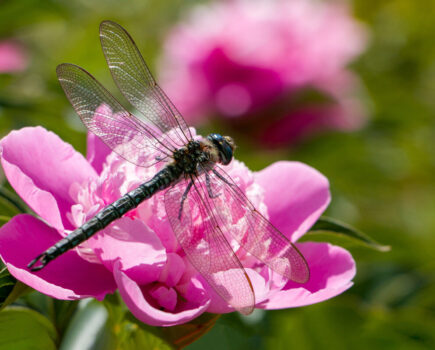Ruth Hayes looks at creating and caring for a garden pond…
A pond adds so much to the garden on every level. It need not be massive – if space is tight you can create a patio mini-pond in a half-barrel – but your patch of land will be so much richer
with one in it.
Like all water features, ponds are therapeutic and relaxing. They are also a fantastic way of increasing the diversity of your garden via aquatic and marginal plants and the rich array of wildlife the water and plantings attract.
Here I show you how to install a pond and look at the essential tasks that need to be done now as temperatures start to rise. These will help maintain the health of your pond for plants and aquatic animals.
The pond I have installed has a flexible butyl liner. This is the most popular way of creating one as it lets you design the shape and size you want and is easier to install than a rigid plastic pre-formed shape. A third alternative is concrete, but this runs the risk of cracking and leaking if there is any ground movement.
The best place for a pond is somewhere away from trees and shrubs that may clog the water with dropped foliage, but where it is still visible from outside seating areas and the house.
There is a wealth of information available and many larger garden centres and nurseries will have sections dedicated to ponds. Alternatively, contact your local aquatic experts for specialist advice and information.
What to do now in your pond
- As temperatures rise your pond will be springing back to life after winter’s freezing dormancy.
- Test the water to make sure it contains the correct balance of nutrients for animal and plant health.
- Cut back dead and dying plant material so it doesn’t contaminate the water.
- Scoop off surface weeds and excess oxygenators to let warmth and light back down into the depths.
- Check the health of your fish, and once the water temperature reaches 10°C start feeding them again. They may still be sluggish, so don’t over-feed them. Cover the pond with netting to protect them from hungry predators.

Creating a garden pond
- Define the perimeter and shape of the pond with string or a hosepipe and start to dig it out. Move the soil and turf out of the way.
- Dig out your pond in graded shelves (this is important so wildlife can climb out) and make sure each shelf is level using a spirit level.
- Line the pond with a thick layer of sand or old carpet. This stops sharp stones or roots from puncturing the lining.
- Get someone to help you drape the lining over the hole. Spread it carefully without dragging it and anchor the sides with bricks.
- While the pond is filling with water, trim the sides of the lining so there is a 12in (30cm) overlap. Anchor it with cemented edging stones or turf.
- Plant up lilies in baskets lined with hessian and filled with aquatic compost. Any marginals can be planted straight into mud at the sides.
- Place your plants where they will thrive. Stand some on bricks and don’t forget to add oxygenators to help keep the water clear.
- The water will soon clear as any sediment sinks to the bottom. If you want to add fish, wait for six weeks until the plants have become established.
Find more tips, advice and articles like this at Amateur Gardening.





